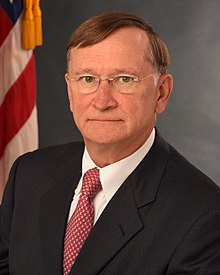
The Pandemic and All-Hazards Preparedness and Advancing Innovation Act of 2019 (PAHPAIA), signed into law last night by the president, strengthens U.S. programs that are critical to protecting Americans from modern, evolving health security threats.
Congress passed the first Pandemic and All-Hazards Preparedness Act in 2006, in the wake of Hurricane Katrina, to drive better federal disaster health support for every American community. The goal was – and continues to be – ensuring that our nation is ready and able to withstand the adverse health effects of public health emergencies and disasters, whether a severe storm, a disease pandemic, or a bioterror attack. The 2019 reauthorization of the law, now called PAHPAIA, builds on work the U.S. Department of Health and Human Services has undertaken over many years to safeguard our nation’s health security.
The newly signed law strengthens authorities for specific programs, including the Hospital Preparedness Program and the National Disaster Medical System, which are essential to our country’s healthcare defenses. More than 31,000 healthcare entities across the country participate in Hospital Preparedness Program coalitions. These partnerships in every state and U.S. territory bring together healthcare facilities – not just hospitals – and healthcare services in local communities to provide coordinated medical care during disasters.
PAHPAIA also provides state health departments with flexibility in dedicating staff resources to meet critical community needs in a disaster. When the HHS Secretary declares a public health emergency, to meet immediate urgent needs, states may request temporarily deployment of state personnel whose salaries are funded by HHS in whole or in part under Public Health Service Act programs and whose day-to-day jobs are not related directly to emergency preparedness, response or recovery. For example, staff paid through a federal grant funding for HIV education could be deployed for a short time to support influenza vaccination campaigns during a pandemic.
We know, however, that disasters can be so catastrophic that direct federal support is needed, and with this law, communities can continue to count on our National Disaster Medical System. This system brings medical professionals, services and equipment from across the country to provide medical care in support of hospitals, shelters, and whole communities after a disaster. Over the past two hurricane seasons, these professionals collectively cared for more than 40,000 patients, providing basic medical care to residents who fled to emergency shelters and more complex medical care when local hospitals and nursing homes were damaged or destroyed.
The new law codifies coordination across federal agencies through a Public Health and Emergency Medical Countermeasures Enterprise so that these agencies more easily bridge gaps, avoid redundancy, and set priorities in developing the medical products needed in national security emergencies. The law also amends other legislation to provide a 10-year authorization for the Project BioShield Special Reserve Fund, which has been integral in the development of 10 medical products that now have earned FDA approval and has added 15 medications, vaccines and treatments to the Strategic National Stockpile.
PAHPAIA enables ASPR to continue enhancing health security; we look forward to using the new or renewed authorities in the law as we work with long-standing and new partners to build readiness and response capabilities against the very serious health security threats our nation faces.
This information is from the US Department of Health & Human Services.


Bulloch Public Safety
06/06/2025 Booking Report for Bulloch County

Georgia News
Georgia Power prepared for 2025 Hurricane Season

Bulloch Public Safety
05/27/2025 Booking Report for Bulloch County

Bulloch Public Safety
06/02/2025 Booking Report for Bulloch County

Bulloch Public Safety
05/19/2025 Booking Report for Bulloch County

Bulloch Public Safety
05/12/2025 Booking Report for Bulloch County

Bulloch Public Safety
05/16/2025 Booking Report for Bulloch County







